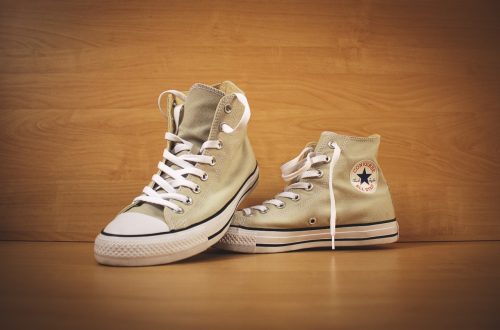
How to Get Rid of Strawberry Legs: Step-by-Step Guide
It happens to the best of us: we shave our legs in anticipation of that silky smooth sensation, only to be disappointed with a smattering of black and brown specks. You’re not alone in this — it’s so prevalent that it’s been given a name on the internet: strawberry legs.
We’ll address all of your strawberry leg questions, including how to correct them and how to achieve the smoothest shave possible.
What Are Strawberry Legs?
Strawberry legs are distinguished by black and brown blotches that develop after shaving. This may give you the impression that you have remaining stubble, but this is not the case.
Rather, black specks appear due to bacteria, dead skin cells, oil, and keratin being stuck in pores and oxidizing, resulting in a black or brown hue.
Strawberry Legs: How to Get Rid of Them
Now that you know what causes your legs to seem this way, it’s much easier to figure out what you need to do to get rid of them.
It ultimately boils down to removing the elements that are at the foundation of the problem. You can take a few simple measures to do this, which we’ll go through below.
Step 1: Exfoliate
The dead skin is the first item you’ll want to remove from the combination obstructing your pores. This will not only assist in removing some of the material that has already clogged the pores, but it will also open them up to avoid future blockage. You’ll need to utilize either mechanical or chemical exfoliation to do this.
Mechanical exfoliation is exactly what it sounds like: it involves physically removing dead skin cells rather than using chemicals.
You may do this using a brush like this one, a washcloth, a loofah, or a body scrub. Salt and sugar scrubs are excellent choices, but coffee scrubs are also delicious.
Let’s move on to the chemical procedures now that we’ve covered all of the mechanical approaches. Chemical exfoliation works by dissolving the dead skin rather than sloughing it off. This generally refers to a skin-friendly acid such as lactic or glycolic acid.
It’s important to note that any exfoliant you use should be suitable for your skin type.
According to the American Academy of Dermatology, people with dry or sensitive skin should avoid using harsh chemical exfoliants and instead use a very mild and soft washcloth or brush. If your skin is oily, you can definitely handle a more aggressive chemical exfoliation. Use whichever exfoliant works best for you; there is no one-size-fits-all solution.
Step 2: Moisturize your skin
It’s critical to hydrate your skin after exfoliating to remove dead and dried skin cells so that it has all it needs to shed skin cells on its own throughout the week.
You’ll want to choose something optimal for your skin troubles, just like you would with exfoliants. A whipped butter can work wonders if your skin is really dry, but you may use anything you like.
You have fewer alternatives if you have oily skin, but you aren’t totally free from moisturizing either.
You’ll want to choose a hydrating lotion that doesn’t add to the pore-clogging oils already present in your skin. An oil-free moisturizer, often containing hyaluronic acid, is your best bet (like this one from Summer Fridays).
Step 3: Hair Removal
Although it may seem obvious, the method you remove your hair impacts the appearance of strawberry legs. Remember how we spoke about keratin earlier? Keratin is a stiff protein found in the hair and skin.
It’s also the main element that clogs your pores and causes strawberry legs, which is why the medical name keratosis pilaris was coined. While excess keratin accumulation in the pores is partly inherited, several variables aggravate the problem, which you may address by changing how you remove your hair.
It’s best to avoid waxing if you have an active flare-up of strawberry legs before removing any hair, as the discomfort might make the bumps and patches more visible (especially if you have sensitive skin).
Consider laser hair removal if you want a more permanent hair removal technique that won’t irritate your skin. Leave it to a professional if you’re going to use waxing or laser hair removal.
There are a few things to remember, whether you’re shaving with an electric razor or an old-fashioned razor.
Shave in the direction of the hair using a conditioning shaving cream or soap and a clean, sharp blade.
All of these techniques will help to prevent discomfort and make any spots that do emerge less noticeable.
Conclusion
That is, believe it or not, the final step! Strawberry legs are irritating, but they aren’t that bad, and you can keep them away by making a few simple changes to your shaving regimen. You’ll be OK as long as you take proper care of your skin before, during, and after hair removal.





